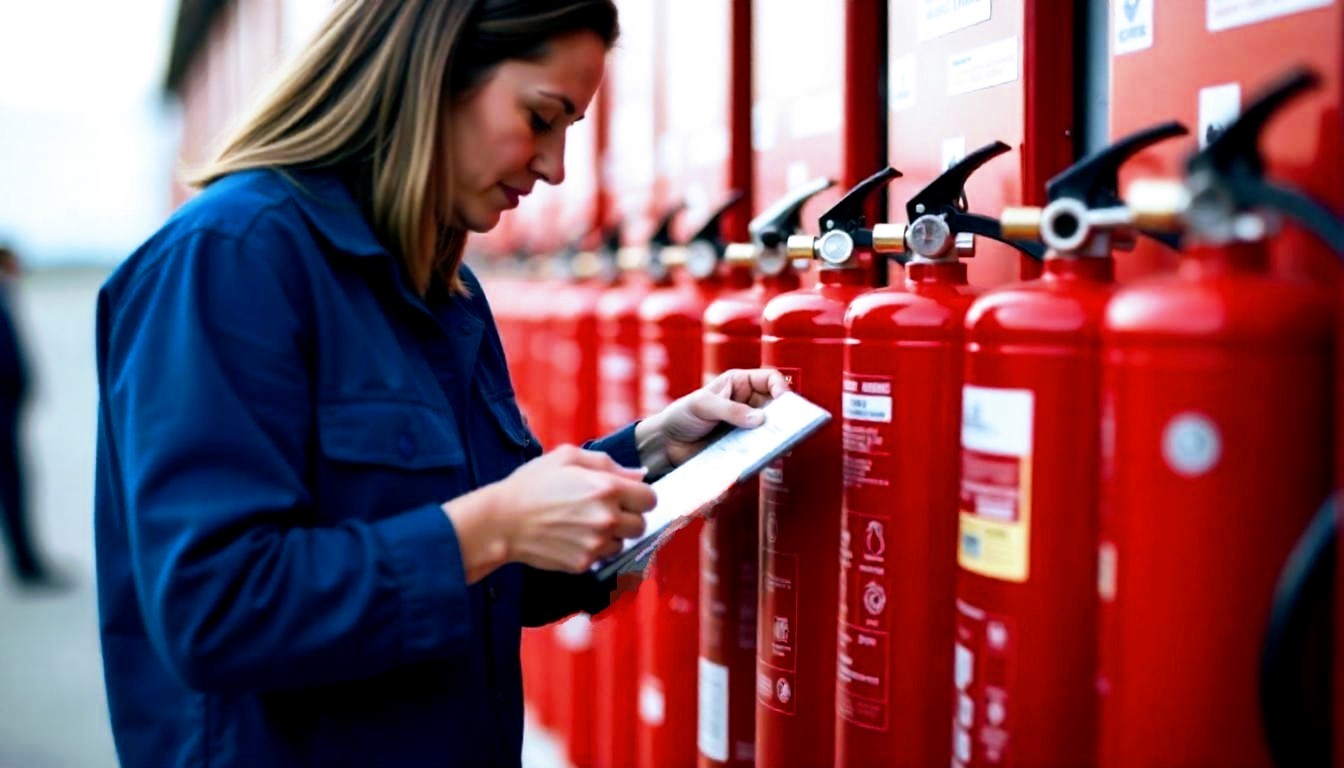

It’s important that all fire safety equipment is regularly inspected on a construction site in order to proactively manage fire risks, protect workers and ensure compliance with legal safety regulations.
Fire protection maintenance includes inspecting and taking care of the necessary equipment to ensure it operates effectively for an extended period without needing repairs. This can involve tasks like cleaning, adjusting, lubricating, or replacing worn-out components
Construction sites are constantly evolving, with daily modifications taking place. These changes can influence not just how well a wireless alarm system can be heard, but also the distances to fire points during an emergency, the quality and type of extinguisher needed and the wireless connectivity between devices.
Additionally, fire equipment on construction sites is frequently subjected to dirt, dust, moisture, and physical impacts, which can result in damage that undermines the efficiency of the fire warning system.
The frequency of inspecting and maintaining fire equipment on a construction site varies based on the type of equipment and the safety standards of the site. Nevertheless, as a general rule, the following guidelines should be followed:
Wireless alert and wireless alarm systems play a vital role in identifying and addressing fires or other emergencies at construction sites. To guarantee that these systems remain fully functional and dependable, it’s essential to conduct regular inspections, servicing, and maintenance.
The checks must be performed following the supplier’s guidelines or, when applicable, in line with the BS 5839:1 safety standard, which should be reviewed at least every six months.
Every fire alarm system, no matter how simple, requires weekly visual testing to confirm its functionality and ensure that the alarm can be heard across the site, especially as work continues. It’s best to schedule this test for the same day and time each week, and make sure that everyone on site knows it’s just a test, not an actual emergency!
The great thing about Defender’s state-of-the-art Polaris System is that it automatically sends internal checks to ensure that all components are effectively connected and working. These internal checks take place every 5 seconds without any human involvement. Any errors that are found will be reported to the asset management portal.
In addition to the automatic checks, we would recommend the following:
It’s a good idea to perform a visual inspection every week on all Call Points, Smoke Detectors, Sounder Strobes, and any other devices in your wireless alert system. Look out for any devices that may be damaged or unplugged. Remember to log any location movement for all devices and extinguishers.
The annual checks will include the weekly inspection along with a thorough examination of the devices connected to the Base Station. This will also involve activating a random device to ensure that all devices with sounders are functioning and that the activated device is successfully communicating with the Base Station. Additionally, replace any low batteries and investigate any devices that are not connecting to the Base Station.
We recommend conducting a complete internal alarm test at least every four weeks, checking each alarm during the process. If your risk assessment indicates a need, you should perform these tests more frequently.
Full cloud-based monitoring is available through Defender’s online asset management portal which gives you real-time reports on all devices allowing full remote control and monitoring.
It’s important to keep a log of all inspections, maintenance, and servicing activities. This log can be a valuable tool for monitoring ongoing issues, ensuring that you meet compliance standards, and serving as evidence of maintenance during audits or inspections.
Fire extinguishers located on construction sites must be routinely inspected and maintained to guarantee their operational effectiveness and adherence to safety standards outlined in BS 5306-3. This maintenance should be performed by a qualified individual who has undergone the necessary training, such as Defender’s in-house engineer or a fire marshal.
In-house visual inspections should be conducted on a weekly basis to confirm that all extinguishers are easily accessible, free from damage, and properly charged. It is essential to check for any indications of tampering, leaks, or corrosion, and to assess the condition of the pin and hose, as well as any other potential damage. Any necessary repairs or replacements should be promptly ordered. Maintaining a supply of spare extinguishers in good working condition is advisable to ensure that fire safety is never compromised.
Annually, fire extinguishers should receive professional servicing from a certified technician, such as a Defender engineer, in compliance with BS 5306-3. This comprehensive inspection and maintenance process will include internal evaluations for corrosion, as well as refilling or recharging the extinguishers as required. The service date must also be recorded on the tag.
The annual servicing also provides an opportunity to reassess the placement of fire extinguishers, ensuring that travel distances are appropriate and that the locations of fire-fighting equipment meet recommended guidelines.
Fire evaluation procedures, commonly referred to as fire drills, play a vital role in ensuring safety on construction sites. These practices help in regularly assessing fire hazards, verifying the effectiveness of emergency plans, and training workers to react swiftly in case of a fire. The primary goal of these procedures is to guarantee that everyone can safely evacuate in the event of a fire.
Emergency procedures should be evaluated by conducting fire drills at least twice a year, ensuring everyone evacuates the building to the designated assembly point within the required response time. It’s essential for site operatives to be completely informed about their actions during an emergency, and the most effective way to achieve this is through consistent fire drills.
The effectiveness of the simulated Emergency evaluation procedures should be used to enhance the process based on the feedback received. Additionally, a comprehensive professional fire safety review should be conducted each year. This review should encompass a complete audit of fire safety equipment, risk assessments, and emergency protocols.
Each day, the fire marshal or designated individual should examine the site at the beginning and end of every shift to spot any possible fire risks. It’s important to make sure that evacuation routes are clearly marked and free of any blockages. Additionally, verifying the proper storage of flammable materials is essential for the safety of all employees. Regular checks and maintenance on the safe operation of electrical equipment should also be conducted.
For more information on the recommended maintenance and fire safety procedure, contact our team of fire safety experts today.